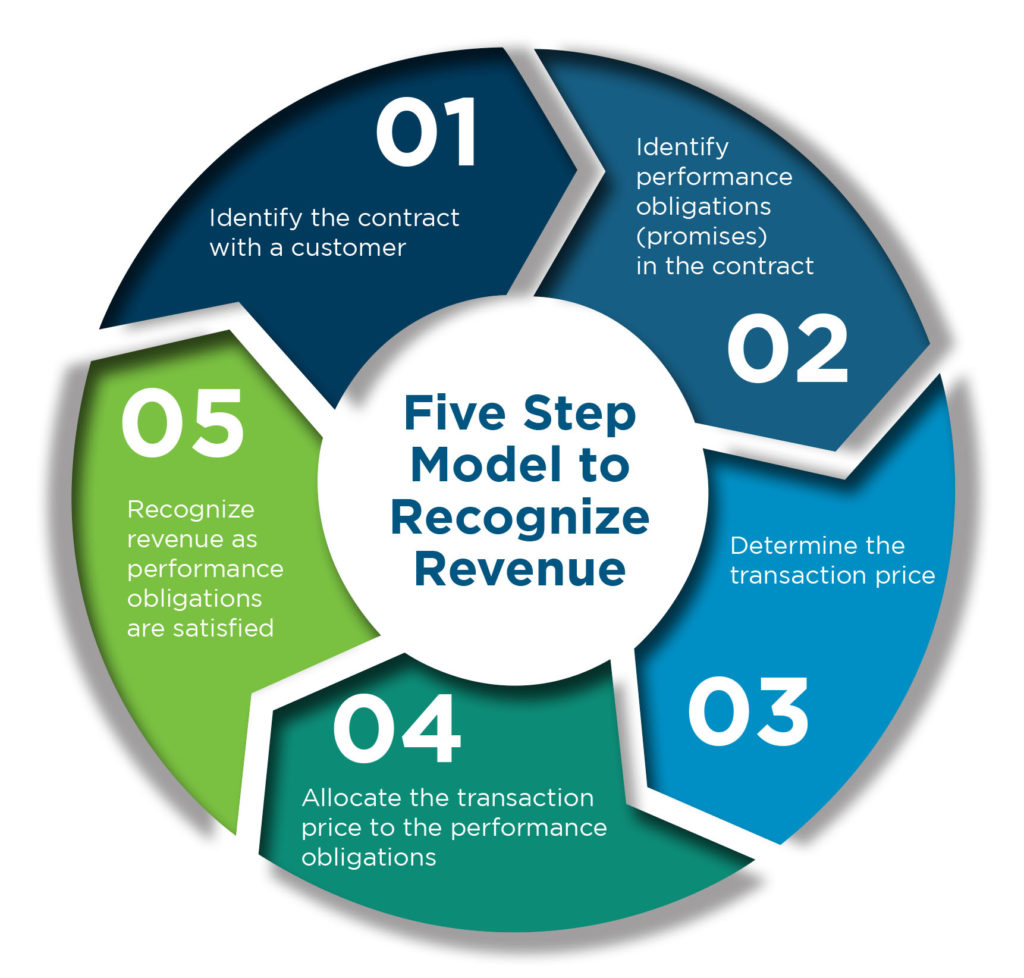Article written by:
Jeff Harden, CPA
Assurance Director
The new revenue standard (ASC 606, Revenue from Contracts with Customers) developed a five-step model for recognizing revenue that will now be applied throughout GAAP, replacing multiple different criteria, thus achieving one of the goals of the new standard; consistency. The only exceptions are contracts that are considered a lease, an insurance contract, a nonmonetary exchange, a guarantee or those involving financial instruments.
Once performance obligations have been identified within the contract (Step 2), the third step of the model requires reporting entities to determine the transaction price. The transaction price is the total amount of consideration (generally cash) an entity expects to receive in exchange for goods or services and is the basis for which revenue will ultimately be recognized as performance obligations are satisfied.
While the determination of transaction price may appear straightforward, complexities arise when expected payments are variable, in a form other than cash, or when consideration is provided to a customer.
Variable Consideration
The amount of consideration a company expects to receive can vary for a variety of reasons. The most common forms of variable consideration include discounts, price concessions, incentives, performance bonuses, penalties, or other similar items. Consideration can also vary if receipt is contingent on the occurrence or nonoccurrence of a future event (i.e. payment is based on the achievement of a specified milestone).
Under ASC 606, variable consideration must be estimated at contract inception in determining total transaction price under Step 3. As guidance, the new model provides two approaches for estimating variable consideration as follows:
- Expected Value Method – Represents a weighted probability of expected payment based on future outcomes. For example, assume management has identified three scenarios under which a discount will be provided based on tiered volume purchases by the customer, $100, $50 and $0, respectively. Assume further that the probability associated with each scenario is 10%, 60% and 30%, respectively. Under the Expected Value Method, variable discount of $40 ([$100 * 10%] + [$50 * 60%] + [$0 * 30%]) is contemplated in determining total transaction price.
- Most Likely Amount – Represents the single most likely amount within a range of future outcomes. Based on the example above, variable discount of $50 is used in determining total transaction price as that amount represents the most likely of the three identified scenarios. Under either of the aforementioned approaches, companies will need to contemplate multiple scenarios of future performance as opposed to a singular estimate, which may be a significant change from existing practice for many organizations.
Noncash Consideration
Consideration received from a customer might be in the form of goods, services or another noncash consideration, such as property, equipment or a financial instrument. In quantifying the transaction price of an arrangement, noncash consideration should be measured at fair value at contract inception. While the determination of fair value can be made based on GAAP’s traditional hierarchy (i.e. level one, two and three inputs), the new standard provides an alternative if fair value cannot be reasonably estimated. Specifically, reference to the estimated standalone selling price of goods or services to be provided can be made to infer the fair value of any noncash consideration expected to be received. In other words, if a company sells goods or services to other customers on a standalone basis at a stated cash price, that amount can be used to infer fair value of noncash consideration for comparable arrangements. As with many aspects of the new standard, judgment will be required.
Consideration Payable to a Customer
While expected payment from customers represents the primary basis for determining transaction price, companies will also need to consider any consideration that is paid, or otherwise provided to, the customer. For example, a rebate may be provided to a customer based on volume purchases during a specified period. Additional examples include coupons, vouchers, discounts and slotting fees, among others. Under Step 3 of the new model, consideration payable to customers is treated as a reduction of transaction price unless payment to the customer is for a distinct good or service. To the extent consideration payable to a customer is variable (i.e. rebate arrangements with escalation features based on volumes), companies will need to make estimates consistent with the approaches for determining variable consideration described above.
Having determined the total transaction price for an arrangement, Step 4 of the new revenue model will thereafter dictate how this amount will be allocated to performance obligations. Similar to elements of Step 3, the allocation of total transaction price will require management’s judgment and estimates in applying ASC 606.

